#the life or legend of gautama buddha
Explore tagged Tumblr posts
Photo
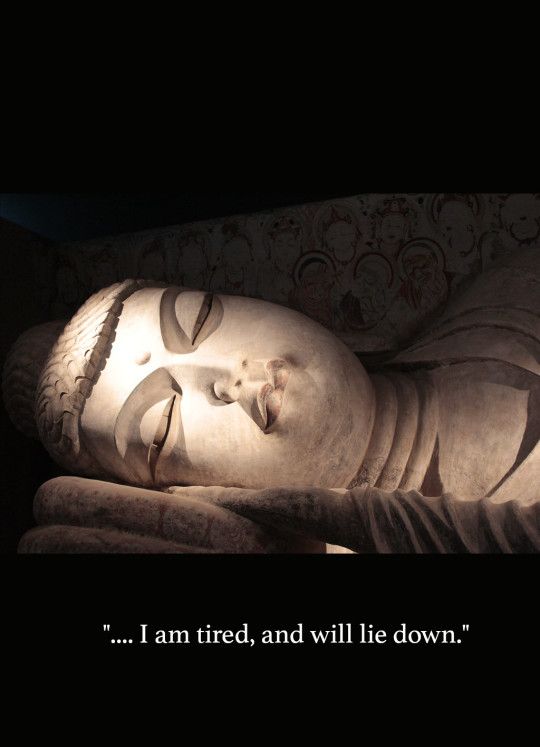
Legends and myths about trees
Trees in Buddhism (3)
Sal tree (Shorea robusta) – the Nirvana
In Buddhism, there is an important day called 'Sanbutsuki (3 anniversaries of the Buddha)', which commemorates three major milestones in the Buddha's life.
These are Buddhist rituals of the Nativity on 8 April, when Buddha was born, the Jodo-e (becoming a Buddha) on 8 December, when he attained enlightenment, and the Nirvana on 15 February, when he passed away.
The Buddha's death is believed to have occurred on 15 February of the lunisolar calendar in China and Japan, and in many places it is now held on 15 March.
According to Buddhist tradition, the Buddha was lying between a pair of sal trees when he died:
Then the Blessed One with a large community of monks went to the far shore of the Hiraññavati River and headed for Upavattana, the Mallans' sal-grove near Kusinara. On arrival, he said to Ananda (Ref1), the chosen disciple, "Ananda, please prepare a bed for me between the twin sal-trees, with its head to the north. I am tired, and will lie down. (DN16; Nirvana Sutra)"
When the Buddha died in Kusinara, there were 4 or 8 sal trees on the 4 corners of his bed. They were said to have bloomed at the same time, then quickly withered and turned white, just like a flock of cranes.
In Buddhism, the brief flowering of the sal tree is used as a symbol of impermanence and the rapid passing of glory. The sal tree is also said to have been the tree under which Kondana and Vessabhu, respectively the fifth and twenty fourth Buddhas preceding Gautama Buddha, attained enlightenment.
The sal tree (shorea robusta, sāla, shala, sakhua, or sarai), is a species of tree in the family Dipterocarpaceae. The tree is native to India, Bangladesh, Nepal, Tibet and across the Himalayan regions.
The sal tree is mythologically classified as a 'tree of life', symbolising resurrection, rebirth and rejuvenation, but in Buddhism it is one of the three most sacred trees, symbolising parinirvana, as the Buddha died under two sal trees in a row.
The three most sacred Buddhist trees are:
Ashoka tree: the tree where the Buddha was born (Ref).
Bodhi tree: the tree where the Buddha attained enlightenment
Sal tree: the tree where the Buddha died.
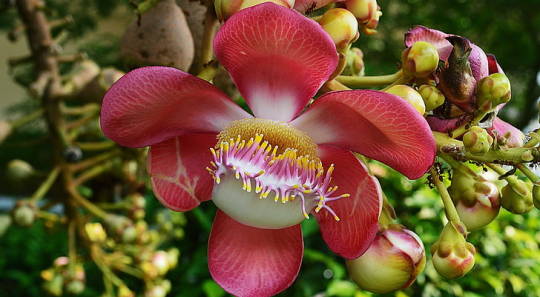
木にまつわる伝説・神話
仏教の樹木 (2)
沙羅双樹 (サラソウジュ) 〜涅槃会 (ねはんえ)
仏教には、ゴータマ・ブッダの生涯における3つの大きな節目を記念する「三仏忌 (さんぶつき)」という大切な日がある。
それが、ブッダが生まれた4月8日の降誕会 (こうたんえ)、悟りを開いた12月8日の成道会(じょうどうえ)、そして入滅した2月15日の「涅槃会(ねはんえ)」。
ブッダの入滅は中国や日本では旧暦2月15日とされ、現在は3月15日に行なわれているところが少なくない。
また、仏教の伝統によると、ブッダは入滅したとき、一対の沙羅双樹 (サラソウジュ) の間に横たわっていた。
その後、大勢の僧侶たちの中から選ばれたアーナンダ(参照1)はヒラニャーヴァティ川の向こう岸に行き、クシナラ近くのマッラ族の沙羅樹の林、ウパヴァッタナへ向かった。到着すると、ブッダはアーナンダに言った。「アーナンダ、2対の沙羅双樹 (サラソウジュ) の間に、頭を北に向けた寝床を用意してください。私は疲れているので、横になります。(DN16; 大般涅槃経)」
ブッダがクシナガラで死去したとき、臥床の四辺に4双8本の沙羅双樹 (サラソウジュ)があった。時じくの花を咲かせ、たちまちに枯れ、白色に変じ、さながら鶴の群れのごとくであったという。
仏教では、沙羅双樹 (サラソウジュ)の木の短い花は、無常と栄光の急速な通過の象徴として使用されることもある。また、沙羅双樹 (サラソウジュ) は、ゴータマ・ブッダに先立つ5番目の仏陀であるコーナニャーと24番目の仏陀であるヴェッサブーが悟りを開いた木であると言われている。
沙羅双樹 (サラソウジュ)はフタバガキ科の樹木の一種で、インド、バングラデシュ、ネパール、チベット、ヒマラヤ地方に自生している。
沙羅双樹 (サラソウジュ)は神話学的には復活・再生・若返りの象徴である「生命の木」に分類されるが、仏教では二本並んだ沙羅の木の下で釈尊が入滅したことから般涅槃の象徴とされ、仏教三大聖樹のひとつである:
無憂樹: 釈迦が生まれた所にあった樹木(参照)
印度菩��樹:釈迦が悟りを開いた所にあった樹木
娑羅双樹:釈迦が亡くなった所にあった樹木
#trees#tree legend#tree myth#trees in buddhism#sal tree#buddha#nirvana#ananda#buddhist rituals#philosophy#nature#art#sacred trees
168 notes
·
View notes
Text
Doctor Strange #172
Cover: September 1968 On-Sale Date: June 4, 1968

This issue introduces us to the legendary Gene Colan's interpretation of Doc. Gene will stay on for the remainder of this run. He will also return for a significant chunk of Doc volume 2. Gene's art can take a bit of getting used to, but once you do you realize that he's perfect for Doc. He has an amazing talent for making the fantastic look solid and plausible. Gene also changes the look of the Eye of Agamotto to the look we've grown accustomed to.
A severely depleted Doc is in Dormie's grip about to have the life crushed out of him. Dormie of course gives a long winded speech on how he knew Doc would come looking for Clea and how he made the fake Victoria from last issue. Doc responds with a "Not while Doctor Strange breathes." Dormie's counter is to prepare to crush Doc.

Dormie loosens his grip slightly to crush Doc who uses the opportunity to escape. This panel gives us a good look at Doc's redesigned All-Purpose Amulet which will eventually be known as the Eye of Agamotto. The previous Ditko version looked like a disk with a plain edge and a scalloped design surrounding the freaky metal eye.

The redesign puts a ring of little gold marbles at the edge of the amulet around the eye. This makes it closer to the "Eye of Buddha" on which it's based.
A digression: The Eye of Buddha is based on a legend of when Siddhartha Gautama, the Buddha, was meditating in the hot sun. Snails climbed onto his head and sacrificed themselves to protect him. Siddhartha continued to wear the shells on his head to honor their sacrifice. A symbolic amulet represents the event.

(Sorry, I can't get Tumblr to center the stupid image.) Gene Colan's depiction is very close to this. End digression.
Dormie then crystalizes the air around Doc and proceeds to recount the events of Strange Tales #146, specifically Dormie's battle with Eternity. Gene redraws the event in his own inimitable style. Sadly, he forgets that Doc had his arm in a sling after being shot by Mr. Rasputin in the previous issue.

Dormie reveals that he wound up in the eternity-forsaken dimension they currently occupy. Dormie soon encounters a horde of demons called Dykkors who were banished by The Ancient One. After a Dormie effortlessly kills a couple of Dykkors who tried to swing their dicks around, the rest come under his sway with the promise of splatting a mutual enemy.

By an odd coincidence, this dimension is where the Spell of Vanishment dumps all his trash and soon after he arrived, Clea shows up. Dormie must not have moved around a lot, because he happens to witness Clea's arrival and captures her.

This brings us back to the present where Dormie does the typical villain monologue describing his plan. The colorist makes an odd choice for Dormie's body suit. It's worse in the original printing than the Masterworks remastering so that image is presented here.

It almost looks like Dormie's costume is flaking away and flesh is showing through. The remaster uses multiple shades of lavender. Dormie conjures up an intimidating orange beast with giant maces for hands to guard the trio as he goes off to do this thing. FYI, powers equal to those you lost is a clue. Thanks Roy, I love these little breadcrumbs!

Once the flame-headed dread one has gone off, Doc uses the All-Purpose Amulet to break free and engages in conflict with the guardian who's powers are equal to the ones he lost.

Like Adkins, Colan has a penchant for full page panels. His panel layout will also grow crazier as the series progresses. It's actually rather tame in this issue.

Doc again uses his eye to attack the beast after he figures out what's actually going on with him.

The orange guardian/beast then spends a page melting like the Wicked Witch of the West as we discover that he was crafted out of the power Dormie stole from Doc. Dormie is too big an egotist to use his own power after all.

After regaining his mojo, Doc frees Clea. Then realizes he should probably free Vicky too. He wouldn't have gotten this far without her after all. Finally meeting her rival, Vicky is all mopey and depressed.

Doc send the ladies home while Dormie summons his sis, Umar, to this hellhole of a dimension. Dormie and Umar spend a page or so spouting some angry sibling rivalry and even the Dykkors get bored with it and call the pair out. Dormie gets P.O.ed and banishes the vocal demons. The rest shut up for now. Finally, they are ready to head to the Doorway of the Dimensions. Here's a question even I don't know the answer to. What is the stripey thing around Dormie's arm that seems to be coming out of a demon's mouth.

The horde with Dormie in front head to the doorway and all have great time throwing some lovely mystic bolts at it. It starts to open, but suddenly Doc is in there way. What happens? That's a tale for next issue.

This was the first issue of this particular series I managed to read, but not my first encounter with Gene Colan's Doc. At this point most of the Doc stories I read to this point were in the Marvel house style and this was rather different. It took time, but it grew on me. Gene has a talent for making just about everything look solid and real. Roy continues to drop little seeds of future plots and tiny clues to what is going on. It's been over 40 years since I first read this issue and I still enjoy it.
#doctor strange#stephen strange#doctor strange reviews#clea#dormammu#victoria bentley#eternity#eye of buddha
4 notes
·
View notes
Text
SECULAR BUDDHISM IN A NUTSHELL

These are just my own views: First, we accept the Four Noble Truths and the Noble Eightfold Path of Buddhism. We reject the religious aspects of Buddhism including all references to Gods, magic, the divinity of Siddhartha Gautama, the mystical nature of nibbana (nirvana in Sanskrit), and reincarnation/rebirth.
Buddhism distilled down to its essence is this. There are certain mental exercises that develop a mental technique of MENTAL DETACHMENT from externals but most of all from OUR OWN THOUGHTS.
This detachment is a means of dealing with the pain of loss which is the necessary reality of life. Every life. However, detachment alone is NOT ENOUGH.
Along with the detachment, we must also live a MORAL LIFE. Buddhist morality is simple and basic. Compassion. Don't be cruel to each other. Share what you have. Don't take what is not given. Be kind. Realize that your past is only a MENTAL FORMATION.
What about DEATH? You won't have to worry about it. You see the peace one achieves during a lifetime of practice is preparation for death.
In the suttas, the discourses (teachings) of the Buddha there are a lot of references to Indian mythology. There is much talk of gods and heaven and hells and reincarnation. The suttas arose in a cultural context after all. The Buddha winks at us and tells us straight up that nobody knows these things. See Cūḷa Māluṅkyovāda Sutta (MN 63) for his complete list of unanswerable questions. This is why I love Siddhartha. He is willing to tell an exciting story full of gods and demi-gods to teach a moral point to the common people but also to let us in on the trick. We teach them step at a time.
However, encased within this cultural setting are the TRUE INSTRUCTIONS. These are the instructions meant for those in seclusion on the path. The Buddha says "stop asking me about life after death. It is a foolish question. All I teach is the ending of suffering, here and now."
In the end, the essence is simple. Be kind. Be compassionate. Practice solitude at least once in your life during that solitude learn concentration. Learn detachment. Learn the destruction of ego. If you want to go further? Well, that is up to you of course but the legends say once one enters the stream there is no going back. Sam
Training Sutta: These are the core of a training practice.
DN 2 Sāmaññaphala Sutta | The Fruits of the Contemplative Life (dhammatalks.org)
MN 10 Satipaṭṭhāna Sutta | The Establishing of Mindfulness Discourse (dhammatalks.org)
MN 118 Ānāpānasati Sutta | Mindfulness of Breathing (dhammatalks.org)
MN63 Cula-Malunkyovada Sutta: The Shorter Instructions to Malunkya (accesstoinsight.org)
28 notes
·
View notes
Text

“This too shall pass”, these magic words teaches us the power of impermanence. The basic idea of these words is to remind us that, whatever situation we are currently going through in life, is temporary and will change. Legend has it, that these words were engraved on a monarch’s ring, by his wise men to remind him that joy, sorrow, exultation of victory or desolation of defeat are temporary.
Nothing is permanent in this world. Everything changes except the law of change. We have experienced many elated moments and sorrows, support and setbacks, victories and defeats. They all have passed away over a period of time, maybe short or long, but have eventually passed away, leaving us to face the oncoming task with more vigour and resolution.
Therefore, let us rest assured that, these days of trial and trouble, hardship, pain and grief caused by the pandemic throughout the world, will not last forever. “This, too, shall pass away”. At the same time, let us try to live in the present and welcome each day, experience it, understand it and face it with courage and intelligence to ultimately enjoy it, because as Alice Morse Earle says “Yesterday is history. Tomorrow is a mystery. Today is a gift. That is why it is called the present.”
Gautama Buddha emphasises the significance of living in the present by saying “The secret of health for both mind and body is not to mourn for the past, worry about the future, or anticipate troubles, but to live in the present moment wisely and earnestly”.
God has bestowed the greatest gift of analyzing and adaptation to us human beings to cope with any uncertainties and calamities. The present, if well spent, will be the happy memories of tomorrow and a foundation stone for what is in store for us in the future. Because, in today lies all the “truth and reality of our existence” as said by the great court poet Kalidasa in the 5th century “Look to this day, For it is life, the very life of life, For yesterday, is but a dream, And tomorrow is only a vision; But today well lived makes yesterday a dream of happiness, And every tomorrow a vision of hope. Look well, therefore, to this day! Such is the salutation to the dawn”.
***
8 notes
·
View notes
Photo
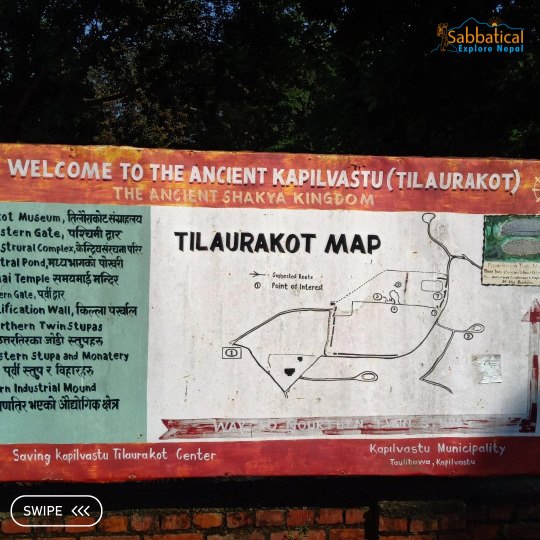

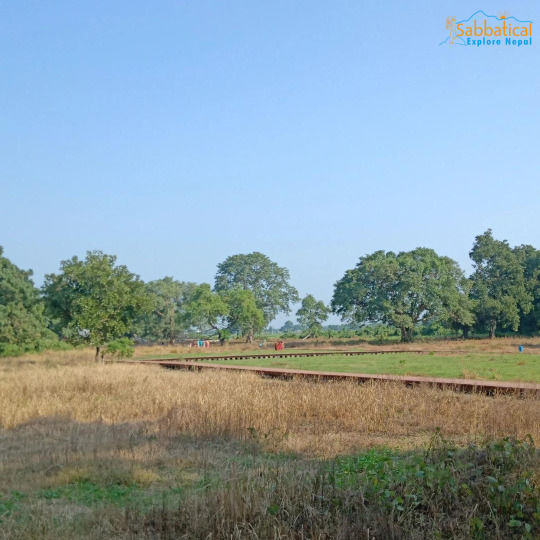
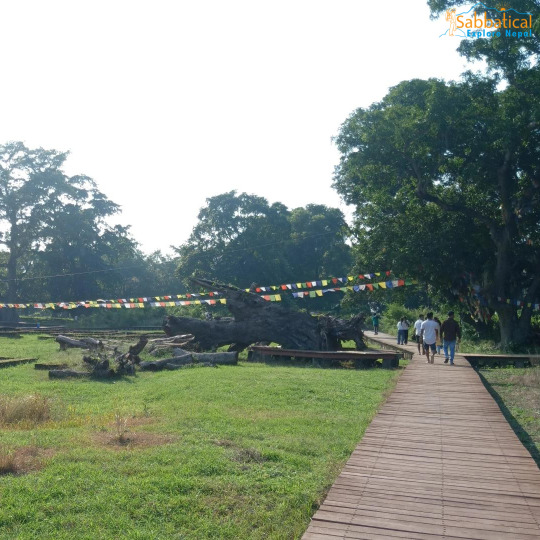

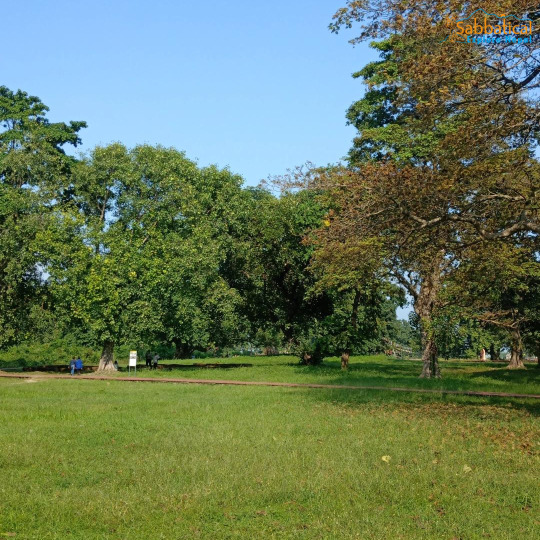


#Tilaurakot is an ancient city of Kapilvastu where Prince Siddhartha, who later became Siddhartha Gautama "#Buddha", spent the first 29 years of his life. It was the capital of the ancient Sakya Kingdom, where the prince lived a lavish life before ultimately going on a # spiritual journey. As per the legend, he left the place from the eastern gate of the place. You can visit the tranquil place and see all the remains of the old palace. The other found objects during the excavation are on #travel display in the #Kapilvastu Museum. When you visit this place, you can travel back in time and spend some spiritual time at the site! This visit is a part of the Buddhist Pilgrimage Tour, which also touches #MayaDeviTemple, the birthplace of Buddha.
#Pilgrimagetour #buddha #lumbini #nepal #Buddhisttour #spirituality #tours #nepalnow
2 notes
·
View notes
Text
Buddhism and the Path to Global Peace: A War-Free World

In today's world, marked by conflict and violence, Buddhism offers a unique and powerful path to global peace. Its teachings, based on the insights of the Buddha, provide a framework for understanding the causes of suffering and conflict, and for cultivating the qualities of compassion, wisdom, and non-violence that are necessary for creating a more peaceful world.
The Buddha conveyed that the fundamental source of suffering lies in attachments and cravings. When we cling to things, people, or ideas, we are constantly afraid of losing them, which leads to anxiety, stress, and conflict. Buddhism teaches us to let go of our attachments and to live in the present moment with mindfulness and compassion.
Another important Buddhist teaching is the concept of interdependence. This means that we are all interconnected and that our actions have consequences for others. When we harm others, we are ultimately harming ourselves. Buddhism teaches us to develop a sense of universal responsibility and to act in ways that benefit all beings.
Introduction to Mahatma Buddha: Birth and Early Life
Mahatma Buddha, also known as Siddhartha Gautama, was a spiritual leader and the founder of Buddhism, a profound philosophy that has left an indelible mark on the world. Born in the 6th century BCE in Lumbini, a region that is now part of Nepal, his life's journey would unfold as a quest for enlightenment and a path to alleviate human suffering.
Birth of Mahatma Buddha in Lumbini:
Siddhartha Gautama's birth is shrouded in legend and significance. According to Buddhist tradition, Queen Mahamaya, his mother, gave birth to him in the tranquil gardens of Lumbini under a sal tree. The event is said to have occurred during the full moon in the month of Vesak, which usually falls in April or May. The newborn Siddhartha, it is believed, took seven steps, and with each step, a lotus flower blossomed under his feet.
Royal Heritage and Early Life:
Siddhartha was born into the Sakya clan, a ruling family in the kingdom of Kapilavastu. His father, King Suddhodana, shielded him from the harsh realities of life, ensuring that Siddhartha lived a life of luxury and opulence within the palace walls. The king, upon Siddhartha's birth, consulted a sage who predicted that the young prince would either become a great king or a great sage.
Kept within the palace confines, Siddhartha was shielded from the suffering and hardship prevalent beyond the royal walls. His early years were marked by indulgence and extravagance, but as he grew older, a sense of curiosity about the world outside the palace began to stir within him.
Read More
0 notes
Text
"Explore Bodhgaya with Reliable Taxi Services from Sambodhi Travel!"🚕🛕
Discover the spiritual tour of Bodhgaya with Sambodhi Travel’s best Taxi Services in Bodhgaya available. The Organization was established in 2008, and it has been receiving a lot of clientele trust and admiration due to it is reliability, and customer satisfaction rate of 4. 9 rating from travelers. Thus, witnessing true legends like the Mahabodhi Temple or the very Bodhi Tree is only a luxury in our vehicles. The company has well maintained vehicles and professional drivers hence your travel can be as safe and fun as you desire. Regardless of whether you are a lone traveler going on a spiritual journey or a family on a holiday, Sambodhi Travel will make your holiday as comfortable as possible. Hire your taxi now and start the journey of a lifetime in the religious town of Bodhgaya.

Buddhist Tour Packages in India
Sambodhi Travel’s unique Buddhist tour packages in India is your guide towards aims at providing you a memorable and remarkable journey. The wholesome packages that we have come up with give you a taste of Buddhism taking you through holy places of Buddhism including the Bodhgaya Mahabodhi Temple and tranquil Lumbini, the birthplace of the Buddha. Feel the diversity of the cultures and the spirituality of every place, using services of professional guides and comfortable vehicles. If you’re looking for a next pilgrimage trip or alternatively an ethnological tour, all you require is here; our packages guarantee an experience that you’ll never forget. Welcome to become our member and strengthen your spiritual bond what will help you to understand the essence of Buddhism in India. Book your adventure today!

Travel Agency in Bodhgaya
Take a tour to Bodhgaya with Best Travel Agency in Bodhgaya with Sambodhi Travel, your travel companion that will create travel memories to last a lifetime. Since our beginning in 2008, our focus is on offering private and unique cultural and spiritual tours in this holiest site. The efficiency in the tour arrangements includes escorted center and city tours; well- connected transportation facilities such as Rent-A-Car . With a stellar 4. From the patients of our travelers who gave us 9/10 rating, we are always keen in offering exemplary customer services and other details. Sambodhi Travel should be your travel companion for the exploration of the Buddhism epicenter in India. Book your journey today!

Buddhist Pilgrmage Tour
Walk on a spiritual path through sacred Buddhist Pilgrmage Tour sites that are showcased in the tour provided by Sambodhi Travel; India Wonders of Buddhism. Intent on detail, our thought-out highly informative, and spiritually enriching itineraries include Bodhgaya, Lumbini and Varanasi, among others. Experience the warmth of comfortable stays, qualified specialised guides as well as transportation at the best. Be it spiritual quest or sovereignty, our tours are designed exclusively for all the spiritual souls. Please come and be our guest so that you can be transformed and learn more about Buddhism and its preachings. Do not wait longer, book your religious trip now and change your tour for the better.

Foot Steps Lord Buddha
Choose Sambodhi Travel to take you on an extraordinary trip along the path of enlightenment, the Foot Steps Lord Buddha. Our carefully planned tours transport you to the land that bore the enlightened one and the places that he preached his gospel in Bodhgaya, Sarnath and Kushinagar. “Feel the spirituality of the place and be guided to the sites such as the Mahabodhi Temple and Ramabhar Stupa.” Accommodation, meals, and guides that are hospitable, delicious, and knowledgeable guarantee you an efficient and informative program. Choose Sambodhi Travel as your reliable guide to the life and the teaching of Siddhartha Gautama, the Buddha. Don’t wait and book your pilgrimage now and enhance your religious experience.

TaxiServiceBodhgaya #TravelConvenience #ExploreBodhgaya #SafeTravel
#BuddhistTour #SambodhiTravel #SpiritualJourney #ExploreIndia #BuddhistPilgrimage
#TravelAgency #Bodhgaya #SambodhiTravel #ExploreIndia #BuddhistPilgrimage #CulturalExperience
#BuddhistPilgrimage #SambodhiTravel #SpiritualJourney #ExploreIndia #Bodhgaya #BuddhistHeritage
#FootstepsOfBuddha #SambodhiTravel #BuddhistPilgrimage #SpiritualJourney #ExploreIndia #BuddhistHeritage #InnerPeace
0 notes
Text
The Sacred Legend of the Shih Tzu: Buddha's Blessed Companion
The legend of the Shih Tzu, cherished in Buddhist lore, is a captivating tale that highlights the breed's sacred status. According to the story, Buddha, also known as Siddhartha Gautama, was accompanied by a small, lion-like dog on his journeys. This dog is often identified as the Shih Tzu.
The Legend Buddha
The tale begins with Buddha descending from the heavens to spread his teachings on earth. He rode majestically on a lion, symbolizing his divine power and wisdom. Alongside him was a small, faithful dog that resembled a miniature lion. This dog, recognized today as the Shih Tzu, is said to have possessed a divine aura and showed extraordinary loyalty and devotion to Buddha.

The Lion Dog's Role
This "lion dog" played a significant role in Buddha's life and travels. The Shih Tzu's unwavering loyalty and companionship provided Buddha with comfort and solace. The dog followed him everywhere, guarding him and symbolizing protection and good fortune. In many depictions and stories, the Shih Tzu is seen as a constant presence, embodying the virtues of loyalty, fidelity, and guardianship.
Sacred Status
Over time, this close association with Buddha elevated the Shih Tzu to a sacred status among Buddhists. The breed was considered blessed and revered, believed to embody spiritual qualities and to bring blessings to those who kept them. This reverence extended to various aspects of Buddhist culture and tradition, where the Shih Tzu was often seen as a living symbol of Buddha's compassion and protection.
Cultural Impact
The legend significantly influenced the perception and treatment of Shih Tzus in various cultures, particularly in China and Tibet. In these regions, the dogs were often kept in temples and palaces, cherished as sacred animals. They were believed to bring good luck and were often involved in religious ceremonies and rituals. The breed's association with Buddha and its revered status ensured that they were treated with great care and respect.

Modern Legacy
Even today, the Shih Tzu's connection to Buddhist legend contributes to its esteemed position as a beloved pet. While the specifics of the legend may vary, the core narrative of the Shih Tzu as a blessed companion of Buddha continues to endear the breed to many. This storied past adds to the charm and allure of the Shih Tzu, making them not only a cherished pet but also a symbol of divine companionship and protection.
1 note
·
View note
Text
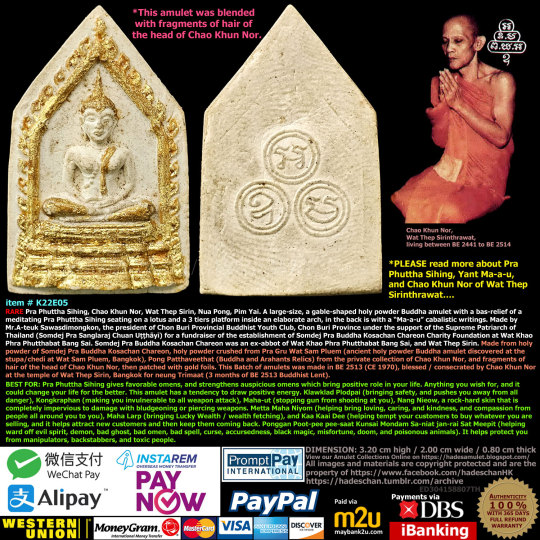
item # K22E05
RARE Pra Phuttha Sihing, Chao Khun Nor, Wat Thep Sirin, Nua Pong, Pim Yai. A large-size, a gable-shaped holy powder Buddha amulet with a bas-relief of a meditating Pra Phuttha Sihing seating on a lotus and a 3 tiers platform inside an elaborate arch, in the back is with a “Ma-a-u” cabalistic writings. Made by Mr.A-teuk Sawasdimongkon, the president of Chon Buri Provincial Buddhist Youth Club, Chon Buri Province under the support of the Supreme Patriarch of Thailand (Somdej Pra Sanglaraj Chuan Uṭṭhāyī) for a fundraiser of the establishment of Somdej Pra Buddha Kosachan Chareon Charity Foundation at Wat Khao Phra Phutthabat Bang Sai. Somdej Pra Buddha Kosachan Chareon was an ex-abbot of Wat Khao Phra Phutthabat Bang Sai, and Wat Thep Sirin. Made from holy powder of Somdej Pra Buddha Kosachan Chareon, holy powder crushed from Pra Gru Wat Sam Pluem (ancient holy powder Buddha amulet discovered at the stupa/chedi at Wat Sam Pluem, Bangkok), Pong Patthaveethat (Buddha and Arahants Relics) from the private collection of Chao Khun Nor, and fragments of hair of the head of Chao Khun Nor, then patched with gold foils. This Batch of amulets was made in BE 2513 (CE 1970), blessed / consecrated by Chao Khun Nor at the temple of Wat Thep Sirin, Bangkok for neung Trimaat (3 months of BE 2513 Buddhist Lent).
……………………………………………………..
BEST FOR: Pra Phuttha Sihing gives favorable omens, and strengthens auspicious omens which bring positive role in your life. Anything you wish for, and it could change your life for the better. This amulet has a tendency to draw positive energy. Klawklad Plodpai (bringing safety, and pushes you away from all danger), Kongkraphan (making you invulnerable to all weapon attack), Maha-ut (stopping gun from shooting at you), Nang Nieow, a rock-hard skin that is completely impervious to damage with bludgeoning or piercing weapons. Metta Maha Niyom (helping bring loving, caring, and kindness, and compassion from people all around you to you), Maha Larp (bringing Lucky Wealth / wealth fetching), and Kaa Kaai Dee (helping tempt your customers to buy whatever you are selling, and it helps attract new customers and then keep them coming back. Ponggan Poot-pee pee-saat Kunsai Mondam Sa-niat jan-rai Sat Meepit (helping ward off evil spirit, demon, bad ghost, bad omen, bad spell, curse, accursedness, black magic, misfortune, doom, and poisonous animals). It helps protect you from manipulators, backstabbers, and toxic people.
……………………………………………………..
Pra Phuttha Sihing
The Pra Phuttha Sihing is a highly revered image of the Gautama Buddha in Bangkok, Thailand, second in importance only after the Emerald Buddha. The image is currently housed at the Phutthaisawan Hall (formerly a part of the Front Palace), now the Bangkok National Museum. The image was brought to Bangkok from Wat Phra Singh, Chiang Mai in 1795 by Viceroy Maha Sura Singhanat, the brother of King Rama I.
History
The exact provenance of the Pra Phuttha Sihing image is still in question. The name Sihing comes from Sinhala the name of several kingdoms in Sri Lanka. According to legend the Pra Phuttha Sihing image was created in Sri Lanka around 157 A.D. and was brought to Thailand in 1307 to Sukhothai. Later it was relocated to Phitsanulok, Ayutthaya in 1378, Kamphaeng Phet in 1382 and Chiang Rai in 1388, before it was brought back to Ayutthaya again and then back to Chiang Mai in 1407, where it was enshrined at Wat Pra Singh.When King Narai conquered Chiang Mai in 1662, he brought the Buddha image back to Ayutthaya, where it was enshrined for 105 years at Wat Pra Si Sanphet until the Fall of Ayutthaya in 1767, following which, the people of Chiang Mai brought the Buddha Sihing image back to Chiang Mai.
In 1795 the image was taken from Chiang Mai by King Rama I and his brother the Viceroy Maha Sura Singhanat to Bangkok, as war booty.[4] At first the image was enshrined at the Front Palace of the Viceroy, after his death in 1803 the image was moved to the Wat Phra Kaew in the Grand Palace by Rama I. It remained there until 1851, when King Mongkut raised his younger brother Prince Chutamani to the unprecedented rank of Second King Pinklao. In order to celebrate the newly elevated status of Pinklao, King Mongkut gave the Second King the Pra Phuttha Sihing image. Considered the second most important Buddha image after the Emerald Buddha. The image was then taken back to the Front Palace (now the palace of Pinklao), where it was housed in the Phutthaisawan Hall, where it remains today.
Apart from the aforementioned image in Bangkok, at least two other images in Thailand are identified with the Pra Phutta Sihing. One at Hor Prabhut Sihing, Nakhon Si Thammarat and the other at Wat Pra Singh, Chiang Mai.
……………………………………………………..
Yant Ma-a-u
The Ma-a-u Cabalistic Writings means “I take refuge in the Buddha, Dharma, and Buddhist Monk”, also refers to the Three Jewels, Triple Gem, or Three Refuges are the supports in which a Buddhist takes refuge by means of a prayer or recitation at everyday life.
These Three Jewels are:
The Buddha, the fully enlightened one
The Dharma, the teachings expounded by the Buddha
The Buddhist Monk, the monks who practice the Dharma.
……………………………………………………..
CHAO KHUN NOR OF WAT THEP SIRINTHRAWAT
Chao Khun Norrarath Rachamanit (Chao Khun Nor) was born on Saturday, 5th Febuary BE2440 and was the eldest of the family of 5 children. He was in the first group of students of the 1st Official University of Kingdom Siam, later known as Chulalongkorn University. After completing his studies, Chao Khun Nor became an officer of the Royal House of King Rama VI. He became the closest attendant to the King and he was promoted to serve at the King’s chamber and attended to the King’s daily needs. After the death of the King Rama VI, Chao Khun Nor was devastated. He left the palace in BE 2468.
His parents wanted him to get married with a lady teacher after seeing Chao Khun Nor was in lament over the death of the King. However, before the marriage would be engaged, Chao Khun Nor told his parents that he wanted to enter monkshood.
Chao Khun Nor ordained on 23th March BE 2468 at Wat Thepsirintravas, a day before King Rama VI was cremated. He became a monk as thamboon (making a merit) for the King Rama VI. Chao Khun Nor was a devoted vegetarian who consumed only a meal a day and decided never to leave the monkshood. He was ordained by Somdej Phra Buddha Ko-sacharn (Charoen), who was also his preceptor. Phra Putwiriyaaigon, the abbot of Wat Sommanatwiharn and Phra Udon Seelahkon Wat Thepsirin were the Dhamma teachers.
STRICT OBSERVANCE OF THE 227 PRECEPTS
It is widely believed that Chao Khun Nor could accurately predict the future by looking at finger and palm prints. When the villagers heard of that ability, all of them flocked to the temple asking him to tell them their future but they were declined by Chao Khun Nor. Despite that, many people continued to visit Chao Khun Nor very often even though they know that they will most probably go back empty handed. They all came for an assortment of reasons ranging from offering presents, to seek a guidance about their problems and to ask Chao Khun Nor about their future lives. Chao Khun Nor was very uncomfortable, pity and sad with all these human beings.
When the villagers offered things to Chao Khun Nor, Chao Khun Nor advised them to bring those to other monks as he strictly observed the 227 provisions of moral precepts. Chao Khun Nor also mentioned that one would similarly accumulate merits when giving offerings to other monks. This made the villagers unhappy and felt that Chao Khun Nor looked down on them. They people brought the matter up to Somdej Phra Buddha Kosacharn (Charoen).
When Somdej Phra Buddha Kosacharn heard this, he asked Chao Khun Nor about this matter. Chao Khun Nor explained that the reason he did not accept the offerings or attendance from the villagers because he was ordained for the purpose of making a merit to King Rama VI. Besides that, he also needed to maintain good concentration in order to study the teachings of Buddhism. In order to succeed, he needed to have no connections to the outside world. All the people who came to visit him brought along the troubles of the world, which adversely affected his concentration. When Somdej Phra Buddha Kosacharn heard his reason, he sympathized and agreed with him.
Chao Khun Nor had strictly observed the 227 precepts, he did not accept any form of offerings from the villagers. The room in which he lived was very empty and consisted of only the basic necessities. There was even no electric lighting. Chao Khun Nor did all his readings in the daytime. When Chao Khun Nor went back to his room, he would lock the door and stay inside. No one ever knew what he did in his room and he never came out to receive guests. He never accepted anything from anyone with the exception of his nephew who would bring vegetarian food from his mother. Chao Khun Nor spent most of his time in his monk’s house.
At the temple, they placed some skeletons of dead people to aid the monks in the development of their insight. The intention was to remind the monks that the female body would eventually resemble this ugly state so that they will refrain from sex and impure thoughts as well as to reinforce the rule of impermanence. LP Parn of Wat Bang Nom Kho Ayutthaya also practiced in such a manner.
WATER AFTER WASHING CHAO KHUN NOR’S FEET COULD CURE SICKNESS
It is a daily routine for Chao Khun Nor to walk back to the monk’s house. There were 2 things that were significantly different with him. Firstly, he did not wear any slippers like the villagers and walked around barefeet. The second and most remarkable was that he always walked on tip-toes and his heels never touched the ground. No one knows why he walked like that but it was assumed that it was a kind exercise for his leg muscles. Before stepping into the monk’s house, he would wash his feet in a basin and dry them.
A village was hit by a deadly disease and one of the villagers was instructed to bring an empty bottle to Chao Khun Nor to ask for some holy water to try to cure his fellow villagers but was declined. The villager had no idea what to do and how to get holy water from CKN to appease the villagers. Out of desperation, he decided to take water from the basin used for washing Chao Khun Nor’s feet and brought it back to his place to give to the sick. Nobody knew the origins of the water and what it was used for. After those sick people drank the water which they thought was holy water given by Chao Khun Nor, all of them were miraculously cured. This greatly puzzled the man who brought back that water to the village.
When this rumor spread out, people who heard it, then all rushed towards Wat Thepsirin to ask Chao Khun Nor for this special holy water but he denied having given any to anyone much to their disappointment. When the villagers heard Chao Khun Nor’s reply, they were all very confused as to where the holy water came from.
The monk staying next to Chao Khun Nor couldn’t stand it anymore as more and more people flocked to the temple and decided to clarify to the villagers once and for all that Chao Khun Nor had never given any holy water to anyone. However, there was one man who came to beg for it but was declined. He also witnessed the same man taking the water from Chao Khun Nor’s feet washing basin but at that time, he did not know what the man was doing.
When the origins of the “holy water” was established, all the villages rushed to take water from the basin. Some waited around for it to be filled up and immediately emptied the basin. This made it a very hectic job for the person responsible for topping up the basin as he had to do it numerous times a day. Finally, the basin was placed in Chao Khun Nor’s room to stop all trouble.
MIRACLE AT THE AMULETS BLESSING CEREMONIES
There were reports of strange incidents happening when Chao Khun Nor made incantations. On the fateful day of Saturday, 25th April BE2513, a photographer was assigned to take photographs of him consecrating a batch of amulets and was busy snapping pictures of the long and elaborate process until it was finished. After the photographs were developed, there was something strange and remarkable about a picture in which Chao Khun Nor was sprinkling holy water on the amulets. The wooden brush that was used to sprinkle holy water emitted white light from its tip. There were many people who were present at the ceremony but the light was not seen by anyone there. It only showed up on the picture. Everyone was amazed as they could not find any logical explanation for this. However, everyone agreed that it could not have been caused by the actual physical sprinkling of holy water itself.
There was another strange incident on Saturday, 5th December BE 2513. There was a big ceremony at Wat Thepsirin and many people came to witness the event. Chao Khun Nor announced that it was going to be the last time he was going to make incantations for the blessing of amulets. In a photograph, the flames from the candles which were lined up directly in front of the principle Buddha statue were “swaying” as if there was a strong wind blowing. However, all the windows and doors were shut during that time and there was no wind at all. The flames should have been completely still. Everyone who was at the ceremony were astonished when the picture was shown. This particular picture was taken when Chao Khun Nor was making incantations in front of the principal Buddha image in a temple and Chao Khun Udomsarasophon was blessing the amulets with holy water.
Based on the pictorial evidence taken during the ceremony, there was widespread belief that the strange incidents were the result that Chao Khun Nor was already an arhat.
……………………………………………………..
DIMENSION: 3.20 cm high / 2.00 cm wide / 0.80 cm thick
.…………………………………………………….
item # K22E05
Price: price upon request, pls PM and/or email us [email protected]
100% GENUINE WITH 365 DAYS FULL REFUND WARRANTY
Item location: Hong Kong, SAR
Ships to: Worldwide
Delivery: Estimated 7 days handling time after receipt of cleared payment. Please allow additional time if international delivery is subject to customs processing.
Shipping: FREE Thailandpost International registered mail. International items may be subject to customs processing and additional charges.
Payments: PayPal / Western Union / MoneyGram /maybank2u.com / DBS iBanking / Wechat Pay / Alipay / INSTAREM / PromptPay International / Remitly / PAYNOW
****************************************
0 notes
Text
Temperance. Golden Art Nouveau Tarot

From its earliest depictions, this trump portrays a figure mingling the liquids of two vessels. Water is being mixed with wine: a traditional representation of moderation. Temperance doesn’t force us to choose between intoxication and purity. Instead, it envisions a reconciliation or blending of opposing forces. Temperance may not be sexy, but she is vibrantly alive. Temperance is actually the card of spiritual practice. Significantly, where nearly every other trump is depicted frozen in place, perfectly still, Temperance is in the midst of pouring. Flowing water is a part of her, defines her. The card depicts an ongoing, ever-flowing orientation toward the world. Perhaps for this reason, a number of modern interpreters have associated the trump of Temperance with the Buddhist notion of the middle way. The middle way is often understood through the legend of Siddhartha Gautama, the historical Buddha. As a prince destined to inherit his father’s kingdom, and protected by his father from the hard realities of life, Siddhartha spends his first three decades behind the palace walls, luxuriating in all the delights of the material world, indulging every whim and seeking every comfort. He does this because he doesn’t know any better. When he does finally see a bit of the world beyond the palace gates, he realizes that no matter how many walls he builds, no matter how much he coddles and fortresses himself, he will inevitably be subject to sickness, old age, and death. And so he leaves the palace for good, leaving behind the sensuous and comfortable world. He spends the next six years in deep ascetic practice, mortifying the flesh, striving to repress and restrain his bodily nature. In this way he goes from one extreme to the other. Finally, when his body is more dead than living, a compassionate woman approaches him with a bowl of rice milk. He takes, he drinks. He abandons the ascetic life for good. He sits beneath a sisal pine—the so-called bodhi (or enlightenment) tree—and enters into meditation, determined to awaken into the fullness of a human life that neither pushes the world away nor drags the world in tight. What he discovers in that moment is the middle way. He finds the path of practice. The middle way is often wrongly understood to be the road between two extremes, like Goldilocks choosing what’s neither too this nor too that. But that sort of middle option doesn’t resolve anything. It just creates another dualism, countering the original dichotomy with Door Number Three. Instead, the true middle way is not another option, but instead another practice. The practice of reconciliation. We return to the flowing water of the Angel’s two vessels. Temperance pours from one vessel to the next. Temperance is an act, a movement, a discipline. Temperance is about fluidity and flow. It’s an active mingling of our life’s currents. The dictionary tells us that reconciling comes from the same Latin word as council. To reconcile is to combine and come together, just as a council convenes in order to resolve points of difference. The good council of Temperance brings our life into harmony. Temperance reconciles the waters of life. Her work is ongoing, energetic, and even holy. It’s the kind of work that signals our most profound, inalienable connection to the sacred and divine. The trump of Temperance invites us, moment by moment, to claim our birthright: a life of integrity and reconciliation. How are we harmonizing our life, even now? Lisa Freinkel Tishman
0 notes
Text
Thai Massage: Ancient Techniques for Modern Relaxation
In the realm of holistic wellness, Thai Massage stands as a timeless practice that transcends the boundaries of conventional massage therapy. Rooted in ancient traditions and influenced by both Ayurvedic and traditional Chinese medicine, Thai Massage is a holistic approach that combines acupressure, energy work, and assisted yoga postures. In this exploration, we unveil the essence of Thai Massage, delving into its rich history, unique techniques, therapeutic benefits, and its relevance as an oasis of relaxation in our modern, fast-paced world.창원출장안마
Historical Roots: The Journey of Thai Massage
Thai Massage, also known as Nuad Boran, has a history that spans over 2,500 years. Its origins can be traced back to ancient India, where it evolved from the teachings of Ayurvedic medicine and yoga. Over the centuries, Thai Massage absorbed influences from traditional Chinese medicine and indigenous Thai healing practices, creating a unique blend of therapeutic techniques.
Legend has it that Shivago Komarpaj, a physician and contemporary of Gautama Buddha, played a pivotal role in the development and formalization of Thai Massage. His teachings were inscribed on palm leaves, creating a foundation for this holistic healing art that is still practiced today.
Techniques Unveiled: The Dance of Sen Lines and Stretching
Thai Massage is characterized by a distinctive set of techniques that differentiate it from other massage modalities:
Sen Lines: At the core of Thai Massage are the "sen" lines, which are energy pathways believed to traverse the body. Much like the meridians in traditional Chinese medicine, the sen lines serve as channels for the flow of vital energy, or "lom."
Acupressure Points: Therapists use their thumbs, palms, and feet to apply rhythmic pressure on specific acupressure points along the sen lines. This aids in the release of tension and promotes the balance of energy.창원출장마사지
Yoga-Inspired Stretches: One of the defining features of Thai Massage is the incorporation of passive yoga stretches. The recipient is guided through a series of stretches that resemble yoga postures, enhancing flexibility and promoting joint mobility.
Joint Mobilization: Thai Massage includes joint mobilization techniques, such as gentle rocking and rotation, aimed at improving the range of motion and relieving joint stiffness.
Compression and Palming: The therapist may use compression techniques and palm presses along the sen lines to stimulate blood flow, ease muscle tension, and enhance overall circulation.
The Therapeutic Benefits: Beyond Relaxation
Thai Massage offers a spectrum of therapeutic benefits that extend beyond the physical to address mental and emotional well-being:
Improved Flexibility: The yoga-inspired stretches in Thai Massage contribute to increased flexibility by targeting and elongating muscles. This is especially beneficial for individuals with sedentary lifestyles or muscular tightness.
Stress Reduction: The rhythmic movements and focused pressure applied during Thai Massage induce a state of deep relaxation, helping to alleviate stress and promote a sense of tranquility.
Enhanced Energy Flow: By working along the sen lines and acupressure points, Thai Massage aims to restore the balance of energy in the body, facilitating the free flow of vital life force.
Pain Relief: Thai Massage is effective in addressing muscular pain and discomfort. The combination of acupressure, stretching, and joint mobilization can alleviate tension and reduce pain in various areas of the body.
Improved Circulation: The techniques used in Thai Massage stimulate blood flow, contributing to better circulation. Improved circulation enhances the delivery of oxygen and nutrients to cells while aiding in the removal of waste products.
Balancing Body and Mind: Thai Massage is deeply holistic, aiming to harmonize not only the physical body but also the mind and spirit. The mindful and meditative aspects of the practice can contribute to a sense of overall well-being.
The Thai Massage Experience: A Journey of Connection
A Thai Massage session is a unique and participatory experience that engages both the giver and the recipient in a dance of therapeutic connection. Here's what one can typically expect during a Thai Massage session:
Fully Clothed Session: Thai Massage is traditionally performed with the recipient fully clothed, often in loose and comfortable attire that allows for ease of movement during stretches.
Interactive Assessment: The therapist may begin with an assessment, discussing the recipient's health history, areas of concern, and goals for the session. This interactive dialogue ensures that the massage is tailored to individual needs.
Sen Line Awareness: The therapist works with a keen awareness of the sen lines, applying acupressure and stretches along these energy pathways to address specific concerns and promote balance.
Assisted Stretches: The recipient is guided through a series of passive yoga stretches, with the therapist providing gentle assistance to deepen the stretch and enhance flexibility.
Breath Awareness: Conscious breathing is often integrated into the session, enhancing the mind-body connection and promoting relaxation. Both the giver and the recipient may synchronize their breath for a more harmonious experience.
Post-Session Grounding: After the session, recipients are encouraged to take a few moments to ground themselves and integrate the benefits of the massage. The therapist may offer post-session recommendations for self-care.
Conclusion: Ancient Wisdom in a Modern World
In a world where the pace of life can be overwhelming, Thai Massage emerges as a sanctuary of ancient wisdom and modern relaxation. Through its unique blend of acupressure, yoga-inspired stretches, and energy balancing, Thai Massage offers a holistic journey that transcends the physical realm. Beyond the immediate sense of relaxation, it invites individuals into a state of connection—connection to their own bodies, to the energy that flows within, and to a timeless tradition that continues to weave its healing magic in our contemporary world. In the dance of Sen lines and the artful stretches of Thai Massage, one discovers not only the soothing balm for tired muscles but a pathway to rejuvenation, balance, and a harmonious union of body, mind, and spirit.
0 notes
Text
Magic Monk: A Journey into the World of Mysticism and Wisdom
The term "Magic Monk" may evoke images of a mystical figure with supernatural powers, hidden away in a remote monastery, practicing ancient arts to unlock the secrets of the universe. While the reality may not be as fantastical, the concept of a "Magic Monk" has captured the imaginations of many and symbolizes the pursuit of wisdom and enlightenment through disciplined practices and a touch of the mystical. In this exploration, we will delve into the concept of the Magic Monk, its historical origins, and the wisdom it embodies.
The Magic Monk Archetype
The Magic Monk archetype is deeply rooted in various spiritual and philosophical traditions, most notably in Eastern religions such as Buddhism and Taoism. These traditions have long celebrated the idea of individuals who, through ascetic practices, meditation, and the study of esoteric knowledge, gain extraordinary insights and abilities. The Magic Monk, or its equivalent, can also be found in Western mystical and spiritual traditions, like the Christian Desert Fathers or the Hermetic tradition.
The Magic Monk is often portrayed as a solitary figure who seeks to transcend the mundane and connect with the transcendent. They embrace a life of solitude and introspection, embarking on a spiritual journey to attain higher consciousness and unlock the secrets of the universe. These seekers are willing to forgo the comforts of ordinary life, living in seclusion and dedicating themselves to rigorous spiritual and intellectual pursuits.
Historical Origins
One of the earliest examples of the Magic Monk archetype can be found in the life of Siddhartha Gautama, who would later become known as the Buddha. Siddhartha was born into a life of luxury but chose to renounce his princely life to seek enlightenment. He spent years in meditation and ascetic practices, ultimately attaining Nirvana and founding Buddhism. His journey from a privileged life to asceticism and back to a middle path represents the core of the Magic Monk's pursuit of wisdom.
In China, Laozi, the sage credited with the authorship of the Tao Te Ching, embodies the Magic Monk archetype. Laozi is often depicted as an ancient sage who wandered the countryside, offering profound wisdom to those who sought his guidance. His teachings on the Tao, or the Way, emphasize the importance of living in harmony with the natural order and finding wisdom through introspection and simplicity.
Within Christianity, the Desert Fathers and Mothers embraced a monastic lifestyle of solitude and asceticism, seeking spiritual enlightenment through rigorous self-discipline and prayer. These early Christian ascetics, such as St. Anthony the Great and St. Macarius the Great, are often seen as the Western counterparts to the Magic Monk archetype.
Magic Monk in Popular Culture
The concept of the Magic Monk has left a profound mark on popular culture. In literature and film, characters like Yoda from Star Wars, Morpheus from The Matrix, and even Merlin from Arthurian legends embody the idea of a wise, mystical figure who imparts knowledge and guidance to the hero on their journey.
One of the most iconic depictions of a Magic Monk figure is in the film "Crouching Tiger, Hidden Dragon." The character of Li Mu Bai, portrayed by Chow Yun-fat, is a skilled warrior who has turned to a life of meditation and spiritual seeking. His character reflects the balance of martial prowess and inner wisdom, which is a common theme in the Magic Monk archetype.
Another example is the fictional character of Mr. Miyagi from "The Karate Kid" series. Mr. Miyagi, portrayed by Pat Morita, is a karate master who imparts not only martial arts skills but also life wisdom to his young student. He teaches the importance of discipline, patience, and mindfulness.
Modern Interpretations
In contemporary society, the Magic Monk archetype continues to be relevant. While we may not have mystical sages with supernatural powers, we have individuals who dedicate their lives to the pursuit of wisdom, inner peace, and self-realization. These individuals may not live in remote monasteries, but they do practice mindfulness, meditation, and other techniques to explore the depths of their consciousness and attain personal growth.
The Magic Monk archetype has also found a place in the world of self-help and personal development. Books, seminars, and online courses often promote the idea of self-discovery and inner transformation. They draw inspiration from the ancient wisdom of Magic Monks, encouraging people to embark on their own journeys of self-improvement and spiritual growth.
Practices and Teachings
The Magic Monk archetype is closely associated with specific practices and teachings that can guide individuals on their path to wisdom and enlightenment. Here are some key elements often associated with the Magic Monk's journey:
Meditation: Meditation is a cornerstone of the Magic Monk's practice. It is a means to still the mind, gain clarity, and access deeper states of consciousness. Through meditation, one can cultivate mindfulness and self-awareness.
Solitude and Silence: The Magic Monk often retreats to a quiet, solitary environment to minimize distractions and engage in deep introspection. Silence allows for the inner voice to be heard.
Asceticism: Many Magic Monks embrace a life of simplicity, renouncing material comforts and desires. This practice of asceticism is believed to help free the mind from attachment to worldly possessions.
Study and Contemplation: The Magic Monk engages in the study of sacred texts and philosophical works, seeking to gain wisdom and insight from the writings of sages and thinkers.
Mind-Body Connection: In some traditions, the Magic Monk may practice martial arts, yoga, or other disciplines that emphasize the connection between the mind and the body. These practices promote physical health and mental clarity.
Transcendence and Enlightenment: The ultimate goal of the Magic Monk's journey is often to attain a state of transcendence, enlightenment, or union with a higher reality. This represents the culmination of their spiritual quest.
In Conclusion
The Magic Monk archetype has captivated human imagination for centuries, representing the pursuit of wisdom, inner peace, and personal growth. Whether through the ancient wisdom of Eastern traditions or the ascetic practices of Western mystics, the concept of the Magic Monk endures as a symbol of the human quest for meaning and self-realization.
In today's world, the Magic Monk's teachings and practices remain as relevant as ever. They provide a roadmap for those seeking to cultivate mindfulness, find inner peace, and navigate the complexities of modern life. The Magic Monk's journey is not one of magic in the supernatural sense but of magic in the profound transformation of the self and the discovery of the extraordinary within the ordinary.
0 notes
Photo

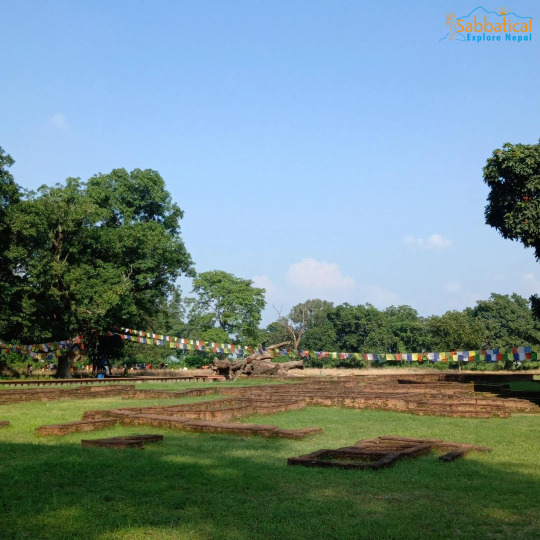
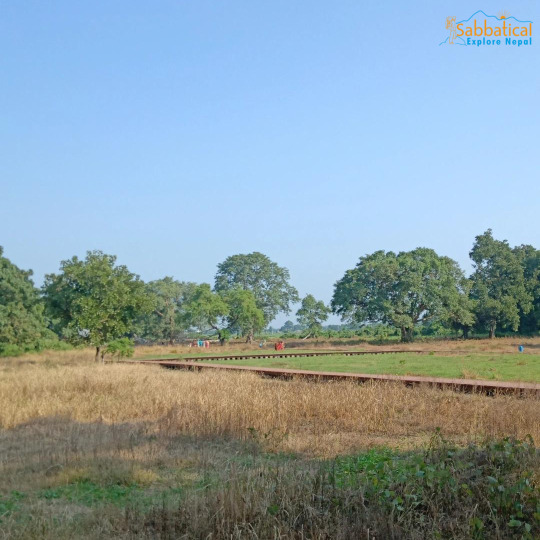

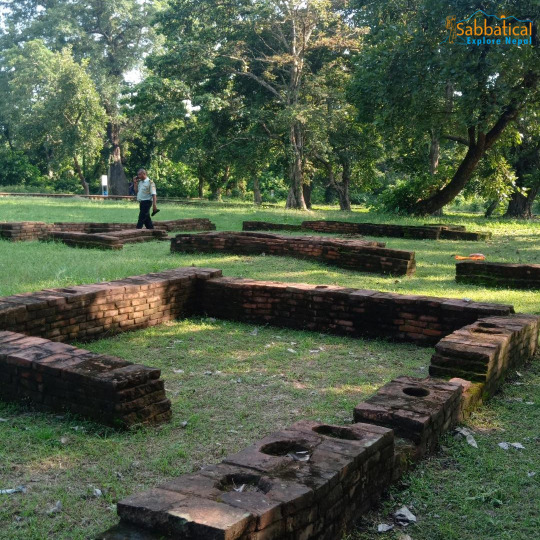

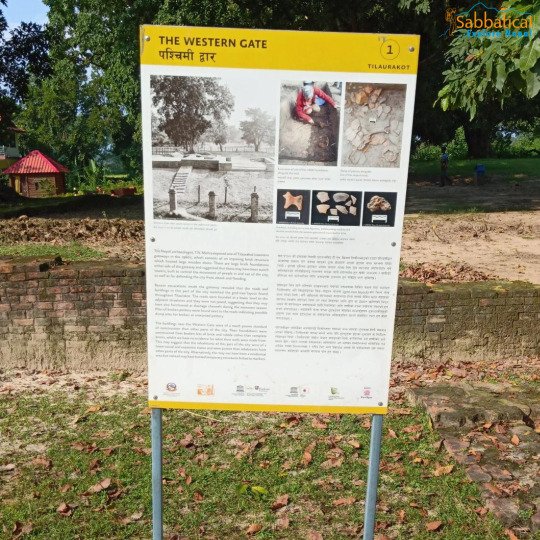

#Tilaurakot is an ancient city of Kapilvastu where Prince Siddhartha, who later became Siddhartha Gautama "#Buddha", spent the first 29 years of his life. It was the capital of the ancient Sakya Kingdom, where the prince lived a lavish life before ultimately going on a # spiritual journey.
As per the legend, he left the place from the eastern gate of the place. You can visit the tranquil place and see all the remains of the old palace. The other found objects during the excavation are on #travel display in the #Kapilvastu Museum.
When you visit this place, you can travel back in time and spend some spiritual time at the site! This visit is a part of the Buddhist Pilgrimage Tour, which also touches #MayaDeviTemple, the birthplace of Buddha.
1 note
·
View note
Text
Bodhgaya Tour, Bihar
Bodhgaya is widely regarded as one of the most significant and holy destinations for Buddhists to visit anywhere in the world. It was here under a banyan tree known as the Bodhi Tree that Gautama attained the highest knowledge necessary to become Buddha, also known as the Enlightened One. The Mahabodhi Temple Complex at Bodh Gaya may be found around 115 kilometers south of Patna, the capital city of the Indian state of Bihar, and approximately 16 kilometers from Gaya, the location of the district headquarters. It is considered to be one of the four sacred locations associated with the life of the Lord Buddha, and more specifically with the accomplishment of Enlightenment. The location that is currently known as Bodh Gaya went by a number of different names in the past, including Uruvela, Sambodhi (Complete Enlightenment), Vajrasana, and Mahabodhi. Around the time of the 18th century, the city was given the name Bodh Gaya for the first time. Even what is now known as the Mahabodhi Temple was formerly called the Bodhimanda-Vihara. According to Buddhist legend, the Bodhi tree, also known as the Bo tree, is the unique sacred fig (Ficus religiosa) that the Buddha sat beneath when he reached Enlightenment (Bodhi) at Bodh Gaya in Bihar, India. Bodh Gaya is located in the Indian state of Bihar.
If you have any concerns regarding the informative and reasonably priced Bodhgaya tours we provide, please don't hesitate to get in touch with one of our helpful Trip Counselors.
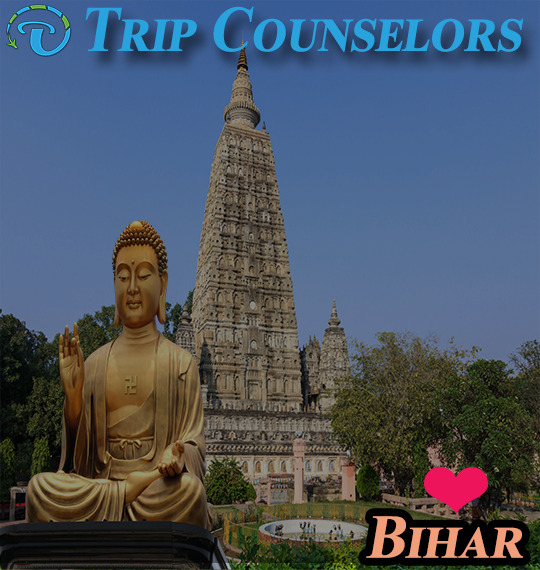
#bodhgaya tour#buddha gaya tour#bodhgaya tour packages#bodh gaya tourism packages#bodhgaya to rajgir#bodh gaya tour#bodhgaya sightseeing#bodh gaya trip#buddhagaya trip#bodh gaya to nalanda#bodhgaya trip#bodhgaya tour plan#bodhgaya travels#bodh gaya package#bodh gaya packages#Trip Counselors#trip planner#plan my trip#vacation planner#solo trip#itinerary planner#tour and travel#travel plan#easy trip planners
0 notes
Text

Varanasi, located in the northern state of Uttar Pradesh, is one of the oldest and most prominent cities in India. Also known as Banaras or Kashi, it is a city that is steeped in culture, history, and tradition. Varanasi has always been an important cultural center for Hindus as well as one of the oldest continuously inhabited cities in the world. Here are some famous places and things to see and do in Varanasi.
👉 1. Kashi Vishwanath Temple

Kashi Vishwanath Temple is one of the most famous temples in India, dedicated to Lord Shiva. The temple is located on the banks of the river Ganges and is believed to be one of the 12 Jyotirlingas. The temple attracts a large number of tourists and devotees from all around the world. If you want to witness the Aarti of Kashi Vishwanath temple, you must make prior reservations, as the temple is always crowded.
👉 2. Dashashwamedh Ghat

Dashashwamedh Ghat is one of the most popular ghats in Varanasi. It is associated with the legend of Lord Brahma who created the Dashashwamedh Yajna at this ghat. It is also the main ghat for performing the Ganga Aarti or the River worship, which takes place every evening.
👉 3. Sarnath

Sarnath is one of the most important Buddhist pilgrimage sites in India. This is the place where Gautama Buddha gave his first sermon after attaining enlightenment. Sarnath is located about 10 km from Varanasi and houses several stupas, temples, and monasteries.
👉 4. Banaras Hindu University

Banaras Hindu University is one of the most prestigious universities in India. It was founded by Madan Mohan Malviya in 1916 and is spread over an area of 1,300 acres. The university is known for its beautiful architecture and lush green campus. The Bharat Kala Bhavan Museum on the campus has a large collection of objects from different periods of Indian history.
👉 5. Ramnagar Fort

Ramnagar Fort is located on the eastern bank of the river Ganges, opposite to the city of Varanasi. The fort was built in the 18th century by Kashi Naresh Raja Balwant Singh. The fort houses a museum that showcases the royal collection of the Maharaja of Benaras, including vintage cars, swords, and old guns.
👉 6. Benaras Hindu University Museum

Benaras Hindu University Museum, established in 1917, is one of the oldest museums in Uttar Pradesh. It is located inside the Bharat Kala Bhavan on the BHU campus. The museum has a large collection of paintings, sculptures, and textiles from different parts of India. The museum also holds regular workshops and lectures on various aspects of Indian art and culture.
👉 7. Assi Ghat

Assi Ghat is located at the confluence of the river Ganges and the river Assi. It is a popular spot for tourists and locals alike, especially during the morning hours. The ghat is known for its beautiful sunrise views and the local life that unfolds here.
👉 8. Silk weaving

Varanasi is famous for its silk weaving industry. The Banarasi silk saree is known for its exquisite designs and craftsmanship. The city has several silk weaving centers where you can witness the weaving process and even buy some silk sarees as souvenirs.
In conclusion, Varanasi is a city that is brimming with history, culture, and spirituality. From ancient temples and ghats to traditional silk weaving, this city has something to offer everyone. Whether you plan to visit the city for a day or a few days, these famous places and things to do in Varanasi are worth exploring.
1 note
·
View note
Text
Shakyamuni Buddha: The Life and Teachings of the Awakened One
Shakyamuni Buddha, also known as Gautama Buddha, was a spiritual teacher who lived in ancient India and founded Buddhism. He was born in the Shakya tribe in present-day Nepal in the sixth century BCE, and since then, millions of people all around the world have been inspired by his teachings. Siddhartha Gautama, according to Buddhist legend, was protected from the harsh realities of life, but…
View On WordPress
0 notes